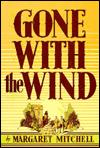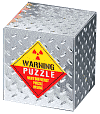Tin Tin

Though Tintin's adventures are formulaic—presenting a mystery which is then solved logically—Hergé infused the strip with his own sense of humour,and created supporting characters who, whilst being predictable, were filled with charm that allowed the reader to engage with them. This formula of comfortable, humorous predictability is similar to the presentation of cast in the Peanuts strip or The Three Stooges. Hergé also had a great understanding of the mechanics of the comic strip, especially pacing, a skill displayed in The Castafiore Emerald, a work he meant to be packed with tension in which nothing actually happens.
Hergé initially improvised the creation of Tintin's adventures, uncertain how Tintin would escape from whatever predicament appeared. Not until after the completion of Cigars of the Pharaoh was Hergé encouraged to research and plan his stories. The impetus came from Zhang Chongren, a Chinese student who, on hearing Hergé was to send Tintin to China in his next adventure, urged him to avoid perpetuating the perceptions Europeans had of China at the time. Hergé and Zhang collaborated on the next serial, The Blue Lotus, which has been cited by critics as Hergé's first masterpiece.
Other changes to the mechanics of creating the strip were forced on Hergé by outside events. The Second World War and the invasion of Belgium by Hitler's armies saw the closure of the newspaper in which Tintin was serialised. Work was halted on Land of Black Gold, and the already published Tintin in America and The Black Island were banned by the Nazi censors, who were concerned at their presentation of America and Britain. However, Hergé was able to continue with Tintin's adventures, publishing four books and serialising two more adventures in a German-licensed newspaper.
During and after the German occupation Hergé was accused of being a collaborator because of the Nazi control of the paper (Le Soir), and he was briefly arrested after the war. He claimed that he was simply doing a job under the occupation, like a plumber or carpenter. His work of this period, unlike earlier and later work, is politically neutral and resulted in classic adventure stories such as The Secret of the Unicorn and Red Rackham's Treasure, but the apocalyptic The Shooting Star reflects the foreboding Hergé felt during this uncertain political period.
A post-war paper shortage forced changes in the format of the books. Hergé had usually allowed the stories to develop to a length that suited the story, but with paper now in short supply, publishers Casterman asked Hergé to consider using smaller panel sizes and adopt an arbitrary length of 62 pages. Hergé took on more staff (the first ten books having been produced by himself and his wife), eventually building a studio system.
The adoption of colour allowed Hergé to expand the scope of the works. His use of colour was more advanced than that of American comics of the time, with better production values allowing a combination of the four printing shades and thus a cinematographic approach to lighting and shading. Hergé and his studio would allow images to fill half pages or, more simply, to detail and accentuate the scene, using colour to emphasise important points. Hergé notes this fact, stating "I consider my stories as movies. No narration, no descriptions, emphasis is given to images."
Hergé's personal life also affected the series, with Tintin in Tibet heavily influenced by his recurring bad dreams. These nightmares, which he reportedly described as being "all white", are reflected in the snowy landscapes. The plot has Tintin set off in search of Chang Chong-Chen, previously seen in The Blue Lotus, and the piece contains no villains and little moral judgement, with Hergé even refusing to refer to the Snowman of the Himalayas as "abominable".
The conclusion of Tintin's adventures was untimely. Hergé's death on March 3, 1983 left the twenty-fourth adventure, Tintin and Alph-Art, unfinished. The plot saw Tintin embroiled in the world of modern art, and the story ended with Tintin apparently about to be killed, encased in perspex and presented as a work of art.
Tintin comic titles published in English -
Tintin in the Land of the Soviets - (1929-1930)
Tintin in the Congo - (1930-1931)
Tintin in America - (1931-1932)
Cigars of the Pharaoh - (1932-1934)
The Blue Lotus - (1934-1935)
The Broken Ear - (1935-1937)
The Black Island - (1937-1938)
King Ottokar's Sceptre - (1938-1939)
The Crab with the Golden Claws - (1940-1941)
The Shooting Star - (1941-1942)
The Secret of the Unicorn - (1942-1943)
Red Rackham's Treasure - (1943-1944)
The Seven Crystal Balls - (1943-1948)
Prisoners of the Sun - (1946-1949)
Land of Black Gold - (1948-1950)
Destination Moon - (1950-1953)
Explorers on the Moon - (1950-1954)
The Calculus Affair - (1954-1956)
The Red Sea Sharks - (1958)
Tintin in Tibet - (1960)
The Castafiore Emerald - (1963)
Flight 714 - (1968)
Tintin and the Picaros - (1976)
Tintin and Alph-Art - (published posthumously in 1986)
Tintin and the Lake of Sharks- (published in 2005)

.jpg)

















































































































































































































































































































































































































































































































